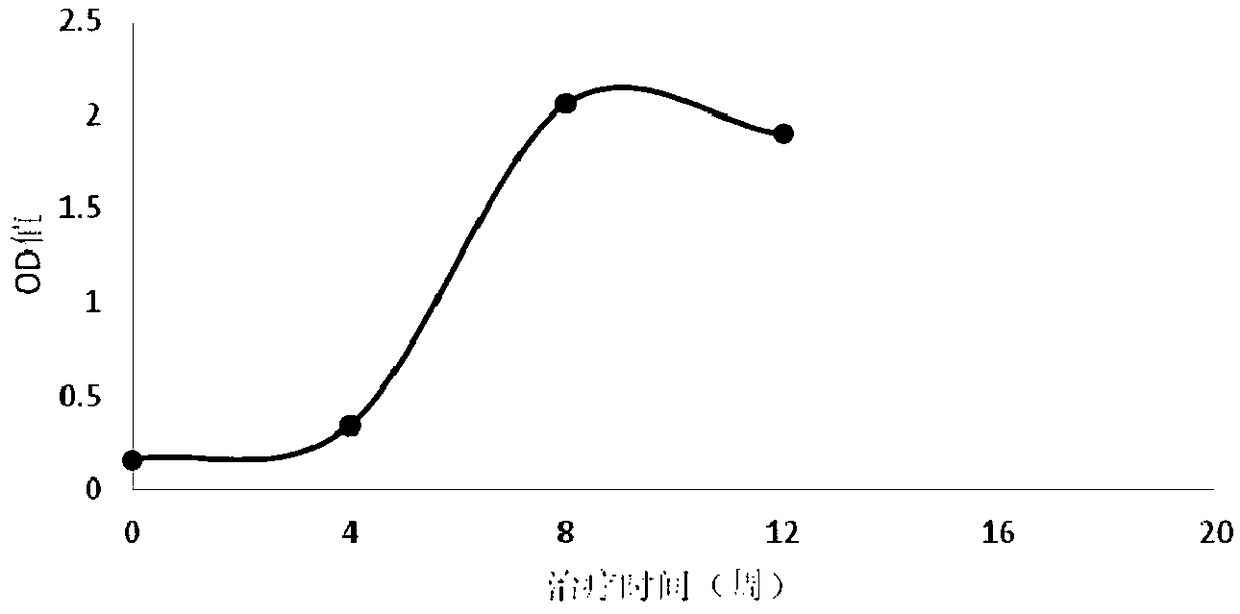Method for obtaining tumor specific T cell receptor
A cell receptor and specific technology, applied in the field of biomedicine, can solve problems such as side effects and the inability of CAR-T cells to accurately locate
- Summary
- Abstract
- Description
- Claims
- Application Information
AI Technical Summary
Problems solved by technology
Method used
Image
Examples
Embodiment 1
[0095] Example 1. Acquisition and application of lung adenocarcinoma antigen peptide-specific T cell receptors
[0096] Subject: Right lung adenocarcinoma patient, female, 46 years old.
[0097] The treatment of patients
[0098] The gene mutation and HLA typing of the patient's right lung adenocarcinoma cells were obtained by sequencing, and it was found that the patient's right lung adenocarcinoma cells had EGFR Exon21c.2573T>G p.L858R mutation, with a mutation frequency of 5.3%.
[0099] HLA classification is: A*11:01:01A*23:01:01, B*15:01:01B*45:01:01, C*01:02C*06:02:01, DRB1*07:01DRB1 *14:54:01, DQB1*02:02:01DQB1*05:02:01.
[0100] According to patient gene mutation and HLA type, according to HLA-peptide prediction algorithm NetMHC3.4 (http: / / www.cbs.dtu.dk / services / NetMHC-3.4 / ) and NetMHC2.2 (http: / / www.cbs .dtu.dk / services / NetMHCII / ), predict the affinity of HLA class I and class II molecules and polypeptides in patients, and select polypeptides with high affinity as...
Embodiment 2
[0149] Example 2. Acquisition and application of colorectal cancer antigen peptide-specific T cell receptors
[0150] Subject: Right-sided colorectal cancer patient, male, 63 years old.
[0151] The gene mutation and HLA typing of the patient's tumor cells were obtained by sequencing. The patient was found to have the gene mutation EGFR746_750DEL with a mutation frequency of 12%. HLA classification is A*03:01:01A*11:01:01, B*07:02B*40:02:01, C*07:02:01C*15:02:01, DRB1*01:01DRB1* 16:02:01, DQB1*05:01DQB1*05:02.
[0152] According to patient gene mutation and HLA type, according to HLA-peptide prediction algorithm NetMHC3.4 (http: / / www.cbs.dtu.dk / services / NetMHC-3.4 / ) and NetMHC2.2 (http: / / www.cbs .dtu.dk / services / NetMHCII / ), to predict the affinity of HLA class I and class II molecules and polypeptides in patients, and select the polypeptides with the highest affinity as antigenic peptides for personalized therapy. The obtained antigenic peptide is shown in SEQ ID NO: 6 in ...
Embodiment 3
[0159] Example 3. Acquisition and application of gastric cancer antigen peptide-specific T cell receptors
[0160] Subject: Gastric cancer patients, female, 51 years old.
[0161] The gene mutation and HLA typing of the patient's tumor cells were obtained by sequencing. The patient was found to have the gene mutation TP53G105V with a mutation frequency of 5.2%. HLA classification is A*11:01:01A*31:01:02, B*15:02B*51:02, C*08:01:01C*15:02:01, DRB1*09:01:02DRB1* 12:02:01, DQB1*03:01:01DQB1*03:03:02.
[0162] According to patient gene mutation and HLA type, according to HLA-peptide prediction algorithm NetMHC3.4 (http: / / www.cbs.dtu.dk / services / NetMHC-3.4 / ) and NetMHC2.2 (http: / / www.cbs .dtu.dk / services / NetMHCII / ), to predict the affinity of HLA class I and class II molecules and polypeptides in patients, and select the polypeptides with the highest affinity as antigenic peptides for personalized therapy. The obtained antigenic peptide is shown in SEQ ID NO: 11 in the sequence...
PUM
 Login to View More
Login to View More Abstract
Description
Claims
Application Information
 Login to View More
Login to View More - R&D
- Intellectual Property
- Life Sciences
- Materials
- Tech Scout
- Unparalleled Data Quality
- Higher Quality Content
- 60% Fewer Hallucinations
Browse by: Latest US Patents, China's latest patents, Technical Efficacy Thesaurus, Application Domain, Technology Topic, Popular Technical Reports.
© 2025 PatSnap. All rights reserved.Legal|Privacy policy|Modern Slavery Act Transparency Statement|Sitemap|About US| Contact US: help@patsnap.com



